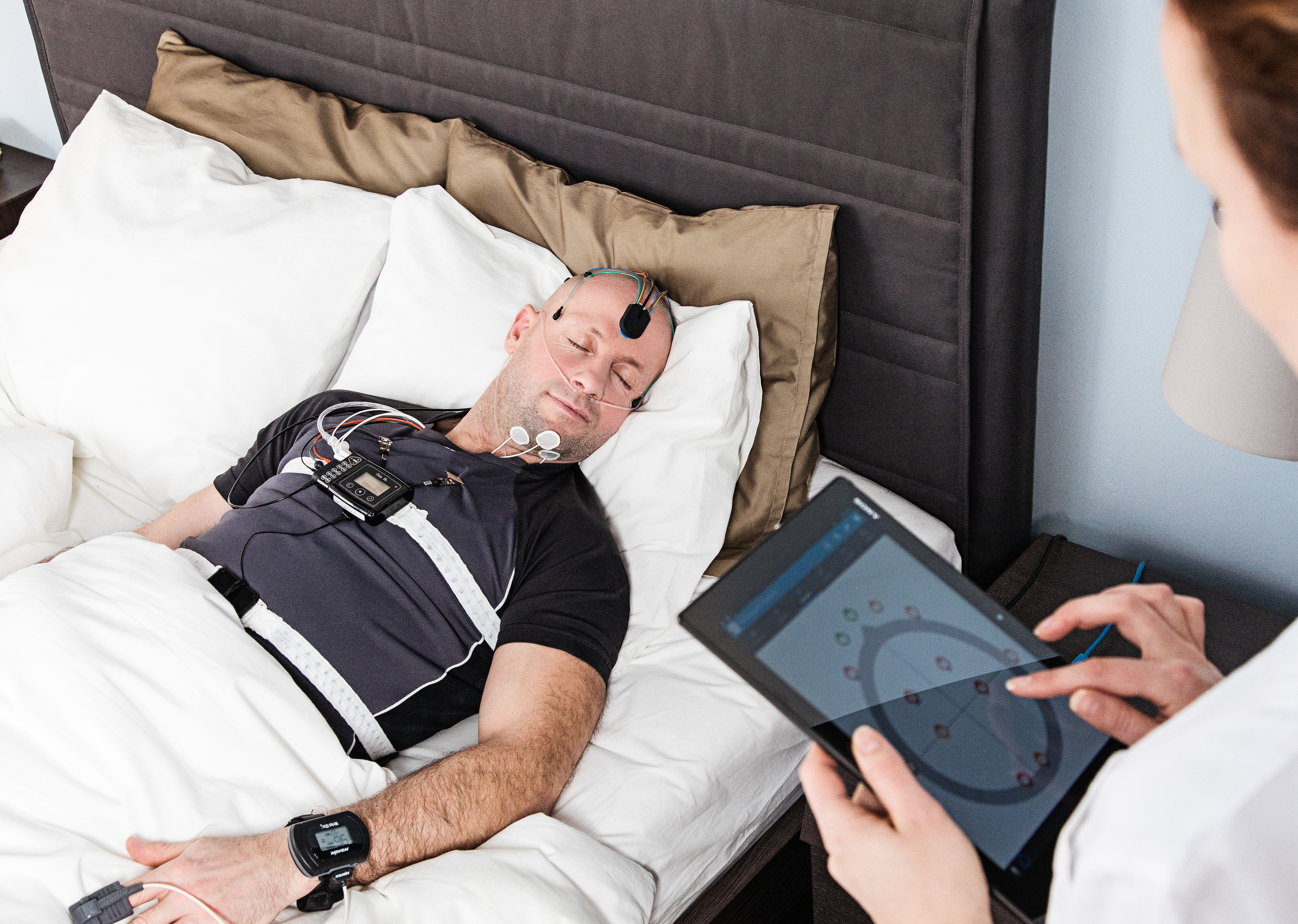
BUY NOW


A sleep study, also known as polysomnography, is a diagnostic test conducted to evaluate and diagnose sleep disorders. It involves monitoring various physiological parameters while a person sleeps, providing valuable information about their sleep patterns, breathing, brain activity, heart rate, and other relevant factors.
Here's an overview of how a typical sleep study is conducted:
Consultation: Before the sleep study, you will likely have a consultation with a sleep specialist who will discuss your sleep concerns, medical history, and any symptoms you may be experiencing. This helps them determine if a sleep study is necessary and what specific parameters should be monitored.
Overnight stay: Most sleep studies are conducted in a sleep center or laboratory where you'll spend a night. The sleep center provides a comfortable bedroom-like environment to facilitate natural sleep.
Electrode placement: Prior to sleep, a sleep technologist will apply sensors and electrodes to various parts of your body. These include sensors to monitor brain waves (electroencephalogram, EEG), eye movements (electrooculogram, EOG), chin muscle activity (electromyogram, EMG), and sensors to measure heart rate, breathing patterns, and oxygen levels.
Sleep monitoring: Throughout the night, the sleep technologist will monitor your sleep and record data from the sensors. They will observe sleep stages, breathing patterns, limb movements, and other parameters to identify any abnormalities or sleep disorders.
Morning evaluation: After the study, the collected data will be analyzed by a sleep specialist who will interpret the findings. They will assess sleep architecture, breathing abnormalities (such as sleep apnea), limb movements, and other relevant factors to make a diagnosis if necessary.
Follow-up consultation: Once the sleep study results are available, you'll typically have a follow-up consultation with the sleep specialist. They will discuss the findings, provide a diagnosis if applicable, and recommend appropriate treatment options based on the identified sleep disorder. Book Now
(c) Care & Cure | 2023
Site Developed by Igen Software Solutions